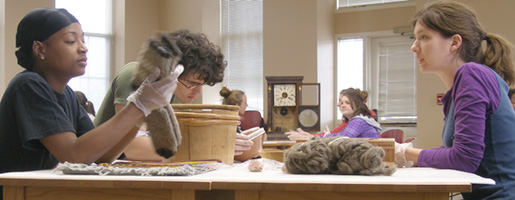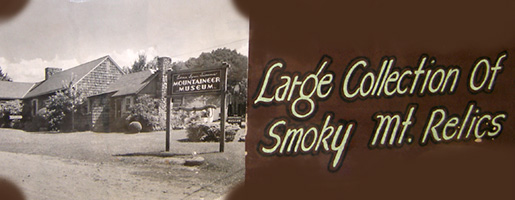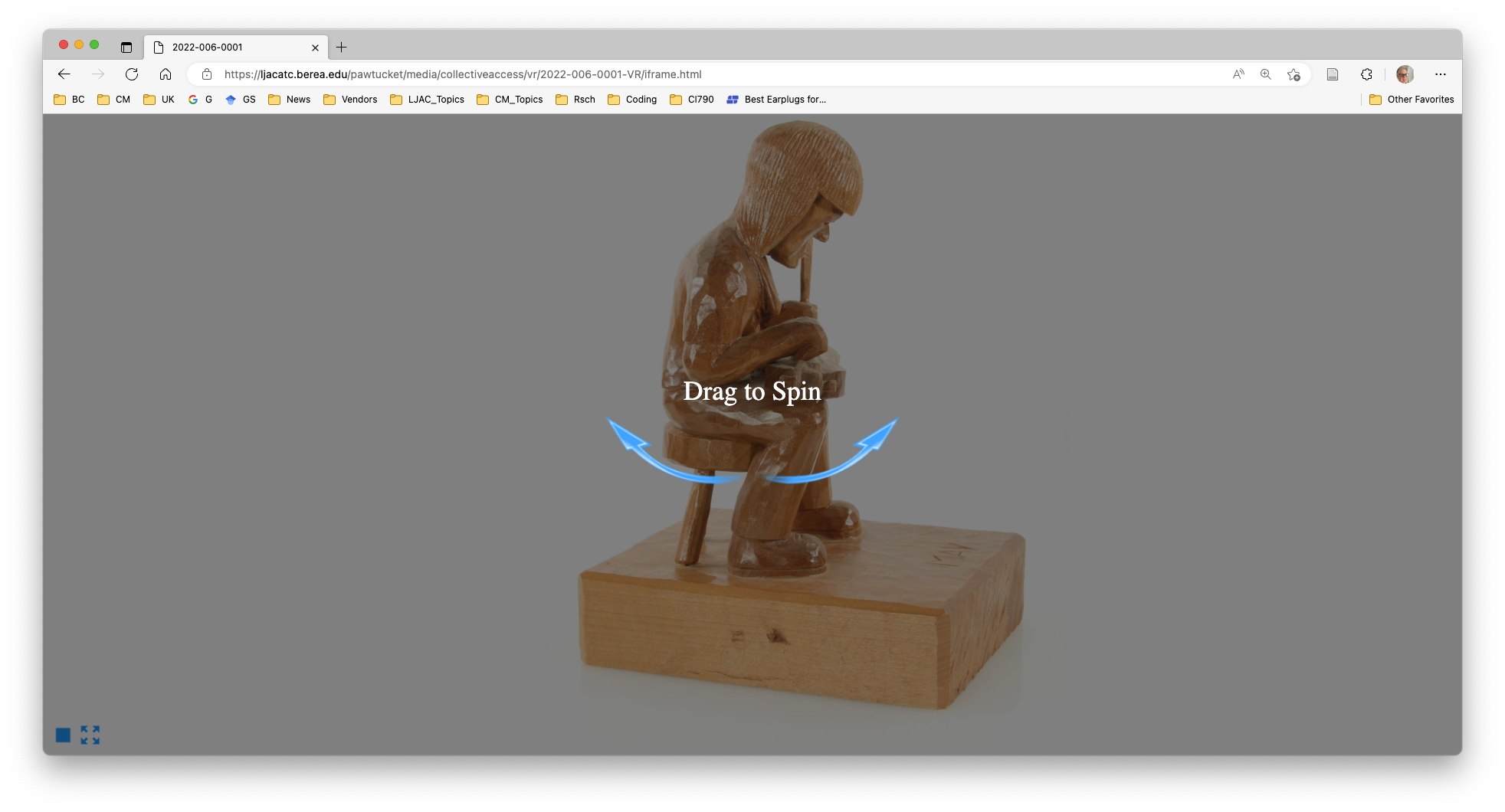
Visit LJAC Digital Access to search and explore the objects, people, and places in the collection and to view our latest online exhibits.
Or read below to learn more about how and why LJAC curates a collection of Appalachian artifacts.
A Teaching Collection
The Appalachian Artifacts Teaching Collection supports teaching and research in several disciplines. The collection is used in courses, in exhibits, and for individual research projects. Portions of the collection are always on exhibit in the Appalachian Center Gallery. Students, teachers, and researchers can access the collection through the curator. Online guides to the collection are available. Only 3-D objects are held in the Center. The Hutchins Library’s Special Collections and Archives holds papers, documents, books, and photographs.
Using Our Artifact Collections
As a teaching collection, we give priority to:
- supporting Berea College courses,
- faculty and student research and
- other academic projects.
Berea College faculty, courses and individual students can work with the collections in a variety of modes. The curator has many well-designed course sessions for encounters with objects. These courses can be led by the curator, the faculty member, or both. Such encounters can be applicable in a wide variety of disciplines and have been used in such courses as: GSTR, APS, ENG, COM, MAT, TAD, SOC, HIS, CFS, and others.
Learning from material culture encounters is central. Appalachian Studies content in not required. Faculty and students can also borrow artifacts. We even deliver to your office or classroom.
We do loan to other institutions, but only for short terms.
Requests for course-use, study, or loans should be made through the curator, Christopher Miller. He can be reached at christopher_miller@berea.edu or 859-985-3373

Artifact Collections Mission/Philosophy
The LJAC Artifacts Teaching Collection exists to support teaching and study in the context of liberal arts undergraduate education. The drivers for our collections policies and practices are:
- a commitment to such a teaching collection and
- emphasizing encounters with objects as a mode of learning.
Our vision is to offer a truly multi-disciplinary collection. This collection should support contemporary and future Appalachian Studies teaching and scholarship.
Our Current Collecting
We are actively developing our collections. We seek both contemporary and historical objects. Specifically, these objects should allow for better support teaching and research in Appalachian Studies and Appalachian connections to curriculum. Current topics of focused interest include:
- Stereotypes of mountain people, especially the hillbilly stereotype
- The urban Appalachian experience
- Migration of Appalachian people
- Workers’ lives in all industries
- Workers lives at Oak Ridge
- Products manufactured in Appalachia
- Religion in Appalachia
- Infrastructure development, such as roads, bridges, and electrification
- The Dixie Highway in Appalachia
- Coal camp life
- Appalachia in World War II
- The Cherokee experience in Appalachia
- Personal equipment from coal miners
We are always interested in strengthening our already strong collections in:
- Appalachian musical instruments, especially dulcimers,
- Appalachian textiles, especially quilts and coverlets,
- Appalachian ceramics and
- Appalachian basket traditions.
Donations of Artifacts to the Collection
We gratefully accept donations of artifacts that support our collections purposes and goals. However, we are very selective. If you are interesting in donating artifacts, please see our page with Information for Prospective Artifact Donors. Then, contact the curator, Christopher Miller at christopher_miller@berea.edu or 859-985-3373. You can also examine our Artifact Wish List for the Appalachian Collections.
History and Development of Our Artifact Collections
The artifact collections of the LJAC represent over 100 years of collecting at Berea College. Some early Bereans collected objects from the region around them while they did their work, some as early as the mid-1890s. These Bereans include Professor Silas Mason, Professor James Watt Raine, and College President William G. Frost. Berea’s early craft programs, such as Fireside Weaving, gathered samples of regional craft traditions to serve as patterns and inspiration. In 1914 the College Library began a special collection of published Appalachian materials. Photographs, archival, and curio collections related to the region soon followed. Various college celebrations, such as the 1955 Centennial, resulted in collections of artifacts being assembled for reflection.

The mid-1960s were the watershed time for systematically maintaining artifact collections at Berea. In 1962, the Edna Lynn Simms Mountaineer Museum Collection was given to Berea College by Simms’ estate. Simms had collected nearly 2,000 artifacts from around the Great Smoky Mountains for her Mountaineer Museum in Gatlinburg (ca. 1925-55). Receipt of this collection prompted the College to create its own Appalachian Museum, which opened to the public in 1971. Formation of the museum became the catalyst for gathering of all the College’s Appalachian artifact collections together into one place. In the early 1990s the collecting mission of the museum was extended to also include Berea College historical artifacts.
In the late-1990s, Berea’s strategic planning process recommended closure of the Appalachian Museum (in 1998) and transition to a teaching collection model. The collection came under the stewardship of the LJAC and supports our mission of teaching about Appalachia at Berea and beyond. In a typical academic year, twenty course sessions, including several hundred students, have encounters of artifacts. LJAC also does public exhibits in the LJAC Gallery.
Digital Access to the Collection
The Berea College Appalachian Museum was an early adopter of online virtual exhibitions in 1995 through its GalleryV virtual gallery and was the first department at Berea College to own a digital camera. During the early 2000s, the Appalachian Center was an early participant in the Digital Library of Appalachia project and used QuickTime VR technology to produce early object VR 360 views of artifacts. Currently, the online catalogue and exhibits are available through the LJAC Digital Access. We continue to be committed to 360 Object VR imaging using open standards.

adfgazsdfg
